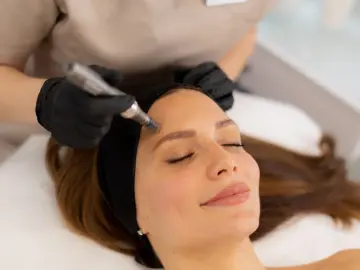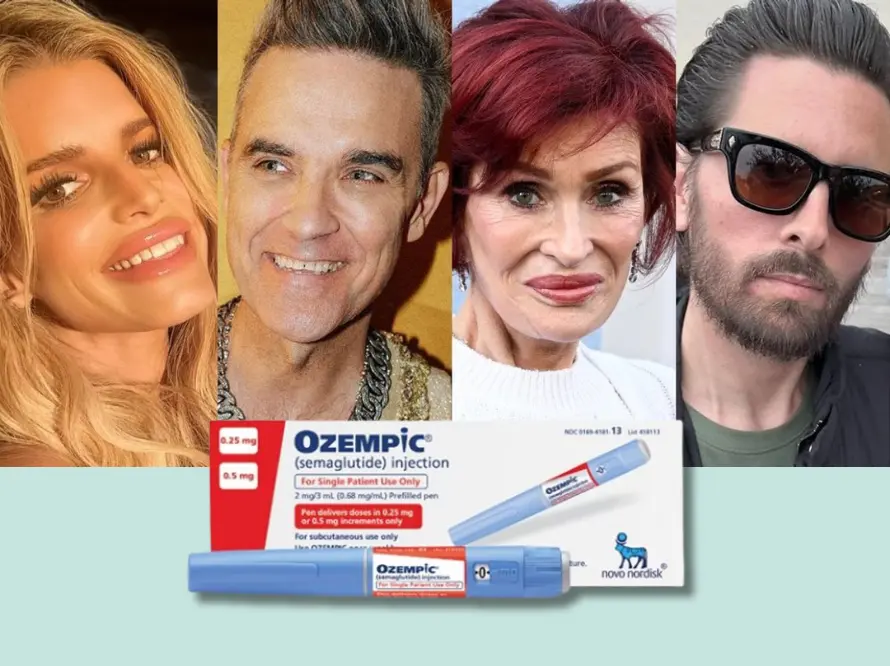Save Face takes a deep dive into the science versus the marketing behind exosomes.
If you have visited any aesthetic sector conferences and trade exhibitions this year, you will have witnessed the growth in exhibitor and speaker presentations devoted to the topic of exosomes. They are the newest ‘kid on the block’, but are they really the ‘best thing since sliced bread’ or just more marketing to bamboozle both practitioners and the public? We look at the claimed benefits, the controversies, the limitations, and the things you need to know about to do your homework before adding them to your clinical practice.
Exosomes are small extracellular vesicles (30-150 nm in size); acellular in nature, they are naturally occurring nanoparticles secreted by cells into the extracellular space. Looking like tiny bubbles, they play a critical role in intercellular communication, transporting encapsulated proteins, growth factors, lipids, and nucleic acids between cells inside their lipid membrane. They pass through cell membranes to release the building blocks of regeneration. Exosomes operate like minute messengers or couriers within the human body. Akin to delivery drivers, they are marketed in serums and used in aesthetic and dermatological applications to distribute packages of active ingredients that can potentially aid in regenerative skin health and rejuvenation through extracellular matrix production and matrix metalloproteinases inhibition and hair restoration by stimulating follicle cell activity.[i]
The hype, the red flags, and the challenges
Although it is argued that exosomes have the potential to bring great benefit, there are numerous questions and challenges related to ethics, regulation, and source origin. This is compounded by concerns over inconsistent and non-standardised production (isolation) methods that impact quality control, concentration, integrity, long-term stability, and biological variability.[ii] Doubts abound about the precise mode of action needed for exosomes to penetrate the skin to have a therapeutic effect (or not), a lack of (long-term) safety and efficacy data within aesthetic practice to back up the many companies’ claims, a reliance on marketing, social media, and influencer-driven promotion, and downright lies that result in fraudulent products with little bioactivity or non-compliant sourcing.[iii]
Similarly, most of the available products marketed are formulated with additional active components and molecules within the exosome serum or solution, many of which have their own proven efficacy, such as hyaluronic acid or peptides, making it difficult to conclusively evaluate the main protagonist in any notable effect on the skin, and whether there is a need for the exosome package. Microneedling is also regularly recommended as the most appropriate, adjunctive treatment delivery method for exosome serums, optimising their entry into the skin. This is not only controversial – since exosome-based products ought to be delivered topically, according to cosmetic regulation and not injected or needled – but microneedling alone has also been proven to have a therapeutic effect on collagen stimulation from the induced trauma. Any before-and-after results from such combinations cannot be easily attributed to the sole presence of exosomes. Even if you can isolate the use of topical exosomes as a post-treatment aid to healing and inflammation reduction, the jury is still out on whether the high lipid content of exosomes is helping to reinforce the skin barrier on their own, rather than their contents per se.[iv]
Attempts to rein in manufacturing standards
Founded in the summer of 2025 to cast an independent eye on this emerging market, the EXACT (Education, eXosomes, Auditing, Compliance and Testing) Oversight Bureau was created in collaboration with laboratories at Harvard Medical School in the USA. It is committed to setting rigorous quality standards for the manufacturing, testing, and auditing of exosome-labelled products, especially those used in regenerative medicine and aesthetics. The bureau undertakes functionality testing of commercially available cosmetic exosome-labelled products from around the world to determine their biological activity (using transmission electron microscopy to check if the membrane of the exosome is intact, has agents within, and is bioactive), assess any mislabelling, and provide independent, trustworthy verification and certification.
According to its founder, Erin Crowley (Co-Managing Partner of the Crowley Center for Regenerative Biotherapeutics), the initiative aims to provide practitioners and consumers with reliable information about the products they use, promoting scientific accuracy and preventing the use of "non-bioactive cellular junk" in the place of genuine exosome therapies.
A recent test of a dozen products labelled as containing exosomes found that 95% did not meet the basic structural criteria of a functional exosome and should not be labelled as such. “The vast majority had broken or non-intact bilipid membranes, often due to destructive processing methods such as lyophilization. Without an intact membrane, you do not have a functional exosome.”, highlighted Dr Carla Mazzeo, Co-Chair of the EXACT Oversight Bureau and Head of the Compliance and Testing Committees.
The EXACT Oversight Bureau is preparing to publish a unified, evidence-based framework for assessing exosome quality across manufacturers and distributors, which will serve as the industry’s gold standard.[v]
Human-, animal- and plant-derived exosomes and UK law
Topical serums and skincare products labelled as containing exosomes are produced worldwide. They may contain human-, animal- (including fish-), or plant-derived exosomes. Aside from discussions surrounding contrasting efficacy, depending on the source, individual territory-based regulations play a key role in governing clinical use based on potential safety concerns and legal ramifications, particularly with human derivatives.
Human-derived options, which are undergoing multiple clinical studies in the USA, tend to be sourced from adult autologous platelets or perinatal tissues containing stem cells such as placenta, umbilical cord connective tissue (Wharton’s jelly), or cord blood. The merits of older- or younger-derived exosomes are hotly disputed and perhaps influenced more by the marketing goals for each company than the true science behind an acellular product.[vi]
America is often touted as the most strictly controlled marketplace due to the enforcement actions of the U.S. Food and Drug Administration (FDA). In an investigative undertaking between 2020 and 2022, the FDA cited exosomes as a regulatory science challenge that will “require it to develop a strong science-based regulatory approach”. Despite acknowledging that many clinical trials involving exosomes were ongoing, the regulator made it clear that there were “currently no quality control standards for the manufacture of extracellular vesicles that would enable validation of a potential commercial product”, particularly in relation to mesenchymal stromal cell-derived exosomes.[vii] To date, there are no FDA-approved exosome products of any kind.[viii]
In Europe and the UK, there is a ban on the sale and use of human-derived exosomes in cosmetic products due to safety concerns about human tissue, detailed in Annexe II of Regulation (EC) No 1223/2009 and the Cosmetic Products Enforcement Regulations 2013: Great Britain.[ix] With many exosome-labelled cosmetic products imported into our shores from countries like South Korea, where regulations differ, high-profile cases of human-derived exosomes being used unlawfully (and perhaps unwittingly) by beauty and cosmetic clinics have hit the headlines. Many clinics and practitioners reported being unaware of the legal status of the products they were using after finding them marketed to the aesthetic sector at trade events.[x]
Animal-derived products are also under development and are now widely available, sourced predominantly from cattle and deer umbilical cords, deer antlers, bovine colostrum, or salmon roe and sperm. The critical criteria for this category of exosomes are the purification and manufacturing processes that should be in place to avoid any potential for zoonotic disease.
Plant-based exosomes are regarded as simpler by nature; they likely carry less risk, but similarly, perhaps less efficacy in delivering meaningful therapeutic effects in humans. They are now ubiquitous in skincare products and serums and are widely used in beauty and aesthetic practice.[xi] Plant-derived exosomes are also referred to as plant-derived extracellular vesicles (PDEVs), plant-derived extracellular nanoparticles (PDENs), or plant-derived exosome-like nanoparticles (PELNs).
Scientific studies of human-, animal- and plant-derived exosomes
Exosomes have been extensively researched in the scientific and medical fields for several decades, primarily those from human or other mammalian sources, with a focus on their potential applications as delivery vehicles in cancer biology, immunology, and wound healing. Despite many laboratory-based studies, the clinical use of exosomes is still regarded by many as being in its infancy[xii], with many unknown facets surrounding their mode of action; certainly, there are fewer robust, in vivo clinical trials or consensus findings for aesthetic applications, despite fragmented, non-comparable studies showing some efficacy related to facial rejuvenation, hyperpigmentation, scarring, and alopecia.[xiii]
Research into plant-based options came along shortly afterwards to mitigate some of these concerns, with a landmark 2016 study using grapefruit-derived exosomes to deliver therapeutic chemotherapy agents to mice.[xiv] This sparked additional research into exosomes derived from grapes, carrots, avocados, ginger, and similar, studying varying indications for use in anti-cancer, anti-inflammatory, gut health, wound healing, and regenerative medical applications.
Concerns persist over the potential for infections, unwanted inflammatory responses, and promotion of malignancy.[xv] With the delivery of growth factor-laden exosomes, much debate surrounds the theoretical risk of cell proliferation upregulation, particularly in relation to skin cell processes, to abnormal levels that could have cancerous outcomes, especially in patients with an increased risk of developing or harbouring skin cancers.xi
The jury is still out on exosomes
Exosomes may well be the next best thing since sliced bread when it comes to their therapeutic powers, but it seems there is little to stop companies from bringing exosome-based products to both local and wider markets with little quality control or evidence-based science to prove any of the beneficial claims they make for effects on skin ageing and regeneration. Manufacturing may be lacklustre, sourcing is crucial, and you should avoid miracle and broad-based claims - let’s face it, natural exosomes will be beneficial in different areas, so why should we assume that laboratory-synthesised options are a ‘treat-all’ solution?
All these doubts perhaps make the rush to use exosome-based therapies in aesthetic medicine seem either innovative or naïve, arguing that the hype is not currently backed up by scientific rigour. There are accusations that this is yet another bandwagon being jumped upon for profit, while regulations struggle to keep up. Before you jump aboard, ask the right questions, seek assurances on laboratory credentials, manufacturing processes, and credible bioactivity testing, ensure you are considering source-compliant products, and that the company can demonstrate unclouded data on efficacy. As is often the case when something new comes to market, your mantra should be caveat emptor when walking the aesthetic conference exhibition floors.
References
[i] Haykal D, Wyles S, Garibyan L, Cartier H, Gold M. Exosomes in Cosmetic Dermatology: A Review of Benefits and Challenges. J Drugs Dermatol. 2025 Jan 1;24(1):12-18. doi: 10.36849/JDD.8872. PMID: 39761139. https://pubmed.ncbi.nlm.nih.gov/39761139/
[ii] The Critical Role of Quality Control in Exosome-Based Therapeutics: A Call to Academic Innovators, Atlantis Bioscience Blog, Published 22nd July 2025 - https://www.atlantisbioscience.com/blog/quality-control-exosome-therapeutics-academic-innovators/
[iii][iii] Rahman E, Sayed K, Rao P, Abu-Farsakh H, Sadeghi-Esfahlani S, Garcia PE, Ioannidis S, Nassif AD, Goodman G, Webb WR. Exosome Revolution or Marketing Mirage? AI-Based Multi-domain Evaluation of Claims, Scientific Evidence, Transparency, Public Sentiment, and Media Narratives. Aesthetic Plast Surg. 2025 Jun;49(12):3454-3479. doi: 10.1007/s00266-025-04712-3. Epub 2025 Mar 7. PMID: 40055226. https://pubmed.ncbi.nlm.nih.gov/40055226/
[iv] Fake Exosomes Raise Alarm, Aesthetic Insights (published 19th August 2025) - https://www.miinews.com/Article?id=466
[v] LinkedIn - Google AI Picks Resilielle's Director of R&D, Dr. Carla Mazzeo, PhD, Exosomes, as One of the World's 6 Leading Exosome Influencers (published 27th June 2025) - https://www.linkedin.com/pulse/google-ai-picks-resilielles-director-rd-dr-carla-phd-6-crowley-j-d--verae/
[vi] Topical Exosome Products Spark Safety and Regulatory Controversies, Aesthetic Insights (published 16th September 2025) - https://www.miinews.com/Article?id=469
[vii] FDA Science and Research: Engineering quality control into biomanufacturing of extracellular vesicle-based products - https://www.fda.gov/science-research/advancing-regulatory-science/engineering-quality-control-biomanufacturing-extracellular-vesicle-based-products
[viii] FDA: Consumer Alert on Regenerative Medicine Products Including Stem Cells and Exosomes (Published July 2020) - https://www.fda.gov/vaccines-blood-biologics/consumers-biologics/consumer-alert-regenerative-medicine-products-including-stem-cells-and-exosomes
[ix] Regulation (EC) No 1223/2009 of the European Parliament and of the Council, Annex II, Reference Number 416 (Cells, tissues or products of human origin) - https://www.legislation.gov.uk/eur/2009/1223/annex/II
[x] Beauty clinics in UK offering banned treatments derived from human cells - The Guardian (Published 29th March 2025) - https://www.theguardian.com/society/2025/mar/29/beauty-clinics-uk-offering-banned-exosome-treatments-derived-human-cells
[xi] Inside Health: Exosomes: Is cosmetics' biggest trend a health risk? (BBC Sounds) - https://www.bbc.co.uk/sounds/play/m002gfwj
[xii] Wang CK, Tsai TH, Lee CH. Regulation of exosomes as biologic medicines: Regulatory challenges faced in exosome development and manufacturing processes. Clin Transl Sci. 2024 Aug;17(8):e13904. doi: 10.1111/cts.13904. PMID: 39115257; PMCID: PMC11307316. https://pmc.ncbi.nlm.nih.gov/articles/PMC11307316/
[xiii] Shah M, Dukharan V, Broughton L, Stegura C, Schur N, Samman L, Schlesinger T. Exosomes for Aesthetic Dermatology: A Comprehensive Literature Review and Update. J Cosmet Dermatol. 2025 Jan;24(1):e16766. doi: 10.1111/jocd.16766. PMID: 39764639. https://pubmed.ncbi.nlm.nih.gov/39764639/
[xiv] Wang Q, Zhuang X, Mu J, Deng ZB, Jiang H, Zhang L, Xiang X, Wang B, Yan J, Miller D, Zhang HG. Delivery of therapeutic agents by nanoparticles made of grapefruit-derived lipids. Nat Commun. 2013;4:1867. doi: 10.1038/ncomms2886. Erratum in: Nat Commun. 2013;4:2358. Zhang, Lifeng [added]. Erratum in: Nat Commun. 2016 Apr 20;7:11347. doi: 10.1038/ncomms11347. PMID: 23695661; PMCID: PMC4396627. https://pmc.ncbi.nlm.nih.gov/articles/PMC4396627/
[xv] Mahmoud RH, Peterson E, Badiavas EV, Kaminer M, Eber AE. Exosomes: A Comprehensive Review for the Practicing Dermatologist. J Clin Aesthet Dermatol. 2025 Apr;18(4):33-40. PMID: 40256340; PMCID: PMC12007658. https://pmc.ncbi.nlm.nih.gov/articles/PMC12007658/




